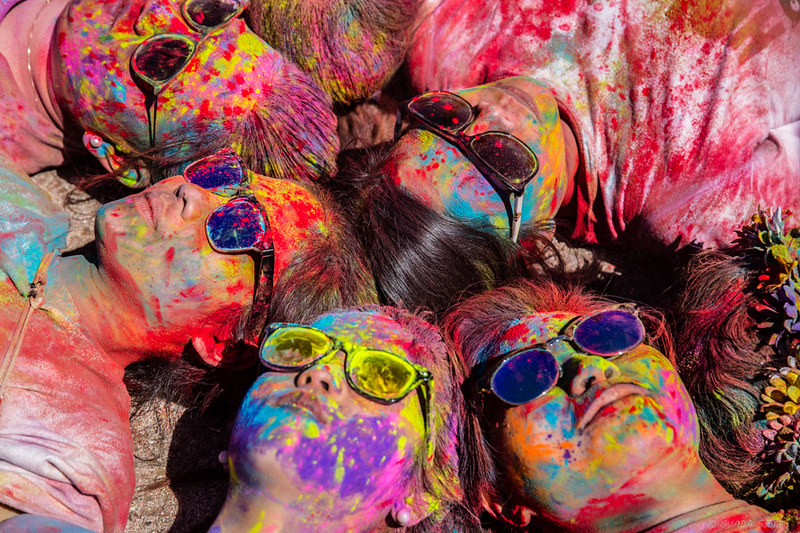Holi festivities: Toxins in colours can be deadly — here are some ways to play safe
Opposed to the olden times when natural colours were used in the celebrations, revelers these days mostly use synthetic colours while enjoying themselves. These colours often carry the risk of being toxic and can pose serious risk to one’s health.

Apart from resulting in skin allergies, the chemicals can possibly cause blindness, irritation in eyes, redness and are can cause cancer. Photo: Flickr
As the country prepares itself to revel in the festivity of Holi, it is important to emphasise the importance of valuing safety while playing with colours.
Opposed to the olden times when natural colours were used in the celebrations, revelers these days mostly use synthetic colours while enjoying themselves. These colours often carry the risk of being toxic and can pose serious risk to one’s health.
Also Read: Holi’s age-old mythological connection with Lord Krishna-Radha and Mathura
From skin allergies, vision loss to life threatening ailments like cancer, modern researches have shown that the colours used in Holi festivities can be exceedingly harmful.
How harmful can the toxins in chemical colours be?
Apart from resulting in skin allergies, the chemicals can possibly cause blindness, irritation in eyes, redness and are can cause cancer.
The black colour can damage kidneys, green can cause eye allergy and can even lead to loss of vision, purple can cause asthma, silver is cancer –causing and so is the colour red.
If not chemical colours, how to play Holi?
Colours can be prepared at home. The dry green colour can be produced by mixing henna with wheat flour. To prepare pink colour, beetroot can be cut in small pieces and soaked in water overnight. Gudhal (Hibiscus) flowers can be crushed and dried to make dry red colour. The colour thus produced is an excellent conditioner for hair.
Likewise to make dry yellow colour, turmeric and besan can be mixed in 1:3 ratio and the mixture is healthy for skin. If besan is not available, rice flour or wheat flour can also be used. To prepare fluid yellow colour, 4 teaspoons of turmeric needs to be boiled in a litre of water and marigold flowers have to be soaked in this water overnight. Such herbal colours are not only skin-friendly but also prevent toxin-infused water from mixing in rivers and other water bodies.
What if others use toxic colours on us?
In order to keep ourselves safe from others using chemical colours during festivities, we should apply mustard or coconut oil on our body. This will prevent the toxic colours from entering the skin pores.
Also, it is important to avoid large crowds during celebrations. Large scale celebrations during Holi are less likely this year as the country witnesses incessant rise in COVID19 cases. The Centre has advised states and Union Territories to impose restrictions under Section 22 of the Disaster Management Act.

